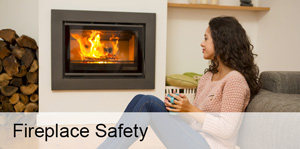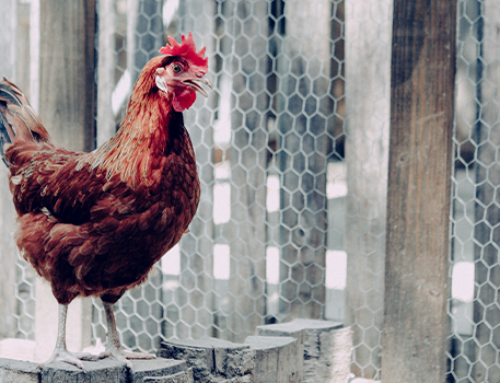 For many, the essence of winter is curling up next to the warmth of a crackling fireplace while enjoying the sights of the snow-dusted scenery outside. Unless of course you live in a Arizona or Texas, in which case it’s much less likely that your home will have a fireplace. If you do have a wood-burning fireplace in your home, however, you should definitely use it to your advantage and enjoy it while the nights are cold! But as you do, it’s important to remember a few tips for fireplace safety to make sure your home, and the surrounding homes in your HOA community, stays safe this winter.
For many, the essence of winter is curling up next to the warmth of a crackling fireplace while enjoying the sights of the snow-dusted scenery outside. Unless of course you live in a Arizona or Texas, in which case it’s much less likely that your home will have a fireplace. If you do have a wood-burning fireplace in your home, however, you should definitely use it to your advantage and enjoy it while the nights are cold! But as you do, it’s important to remember a few tips for fireplace safety to make sure your home, and the surrounding homes in your HOA community, stays safe this winter.
The Risk of Chimney Fires
For any home that has a wood-burning fireplace, a chimney fire is the most common risk during the winter months if the right precautions aren’t taken before the season starts. Chimney fires can cause costly damage to not only the chimney structure itself, but it can also spread to the rest of the home. This can be risky for single-family homes in your community that are in close proximity to others, and especially for townhomes or condos that have multiple units in one building.
Chimney fires are caused by a buildup of debris and soot, also called creosote, which prevents the smoke from the fireplace from venting properly. People usually describe chimney fires as having a low rumbling or popping noise with an intense hot smell. Usually, chimney fires are noticed first by outsiders who see sparks or flames coming out of the chimney. As it intensifies, it may cause dense smoke to start backing up into the house.
Preventing Chimney Fires
Fireplace safety for wood-burning fireplaces really comes down to three essential steps: investing in regular chimney cleaning, always using proper firewood, and burning the fireplace at high heat. Here’s why:
- Chimney Cleaning: If everyone made sure their chimney was cleaned out seasonally, chimney fires for the most part wouldn’t be too be a risk. Yes, paying to have your chimney cleaned and maintained does cost money, but it’s a small price to pay in comparison to the cost for repairing damages from a chimney fire. Typically, annual chimney cleaning costs anywhere from $100-$200. Repairing a chimney damaged in a fire can cost up to $4,000, and that’s not factoring smoke or structural damage to the home itself. Add annual chimney servicing to your to-do list of yearly home maintenance and save yourself from having to pay for the damages later.
- Proper Firewood: Having a wood-burning fireplace can be an inexpensive and effective way to heat your home during the chilly winter months. But if you use firewood for your home that is unseasoned or too green, it can cause increased buildup of creosote that puts you at more risk of having a chimney fire. Make sure that the firewood you buy or collect has dried out for at least a year and consider keeping a wood moisture meter on hand to check the status of your wood before you burn it.
- Burn at High Heat: Making simple changes to how you regulate the heat of your fireplace can significantly reduce the risk of chimney fires. Instead of smoldering or dampening your fire at night if it gets too hot, try opening a window instead. Burning your fireplace at a low temperature produces more smoke and unburnt particles that will stick to your chimney walls. Keep your fire burning hot, open windows, or consider using fans on a low setting to circulate the heat better throughout the house.
If You Experience a Chimney Fire
If by chance you didn’t get around to the preventive maintenance on your chimney and you experience a chimney fire (which of course we hope would never happen to you), it’s still important to know how to react to keep your home and family safe.
The most important thing to remember is that you shouldn’t try and fight the chimney fire on your own with things like salt or baking soda. The best thing you can do is close the dampers, call the fire department, and evacuate the house. Firefighters have the proper equipment to put out the fire and also have thermal imaging devices to detect if the fire has moved to other areas of your home.
If the residences in your HOA have wood-burning fireplaces, it’s a good idea to send seasonal reminders to members about guidelines for fireplace and chimney safety. You might even consider listing 2-3 different options for trusted chimney service companies with contact information that members can use to make sure their yearly maintenance is covered. With the right information and habits, you can have a warm, safe winter without the worry of chimney fires.
For more information and safety tips, or to discuss management services for your HOA community, contact Spectrum Association Management!






